Discovering Free Music Making Software for All Levels
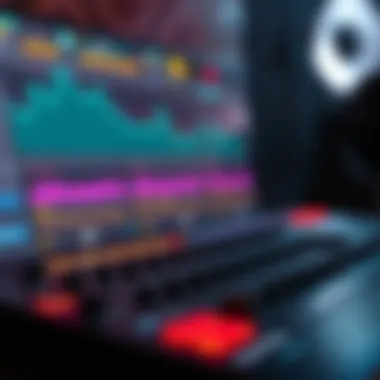
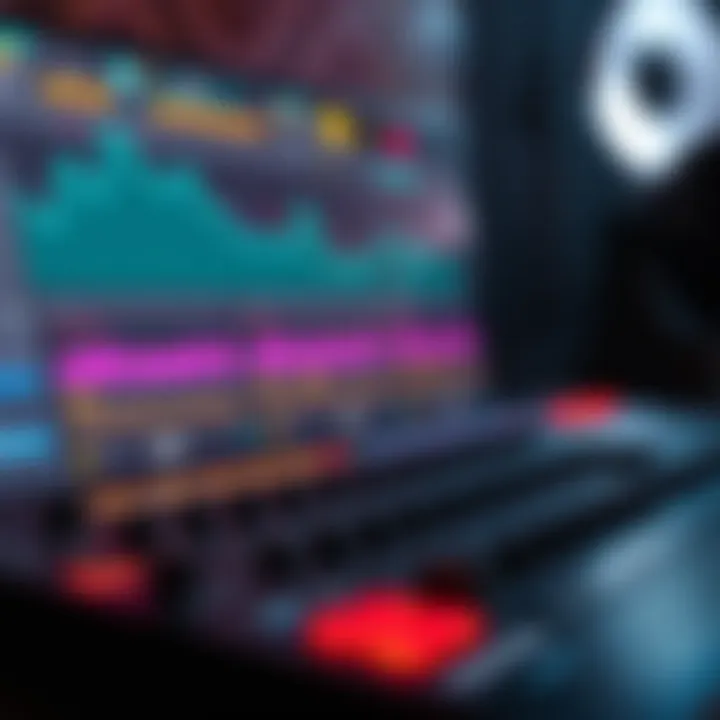
Overview
Prelude to the topic of the article
Making music has always been an artistic endeavor that holds a special place in many hearts. However, in today’s digital age, creating music can seem daunting, especially for those who are not familiar with the intricacies of traditional music production. The rise of technology has democratized music creation, allowing anyone with a bit of creativity and the right tools to compose and produce tracks. With this transformation in how music is made, free music production software has surfaced as an essential resource for beginners, hobbyists, and even experienced musicians looking to explore new soundscapes without a hefty price tag.
Brief background information
The explosion of music software choices in recent years is hard to miss. Glancing at the landscape, you’ll find a plethora of options, each aiming to cater to different facets of music creation. Whether it’s recording an idea on the go or crafting a full-scale production in a professional DAW (Digital Audio Workstation), understanding the available tools is key. This article takes a closer look at the top contenders in the world of free music-making software, regardless if you’re flaunting a Mac or a trusty old Windows PC. From user-friendly interfaces designed for newcomers to more advanced features tailored for seasoned pros, there’s a tool out there that fits your needs.
By exploring varied software options, we aim to equip you with the knowledge necessary to make informed decisions in your music-making journey. Let’s dive into the specifics and find the right software that will help you materialize those musical ideas waiting to be born.
Understanding Music Production Software
In today’s music landscape, the availability of software has transformed how both amateurs and professionals approach music creation. Understanding music production software is essential for anyone venturing into this realm. It’s not simply about creating sounds and combining them; it is about harnessing technology to give voice to creativity. From composing to mixing and mastering, these tools shape the entire process.
Definition of Music Making Software
Music making software refers to a range of digital tools designed to create, edit, and produce music. Often termed Digital Audio Workstations (DAWs), these programs provide a platform where musicians can record, arrange, and edit sounds. While certain high-end versions come with hefty price tags, many free options exist for individuals eager to explore their musical talents without the burden of upfront costs. For example, programs like Audacity or GarageBand are widely recognized not just as tools, but gateways for musicians to express themselves artistically.
Importance in Modern Music Creation
The significance of music making software cannot be overstated. It has democratized music production, allowing anyone with a computer to create professional-quality tracks. Whether it’s a budding guitarist looking to lay down a demo or a producer working on complex arrangements, the capabilities offered by these software platforms are a game-changer. For many, it's also a vital medium for collaboration. Musicians can share digital files with ease, regardless of geographic location. This evolution helps foster a more connected music community, enhancing creativity by pooling ideas.
Digital Audio Workstations Overview
When discussing music making software, the term Digital Audio Workstation (DAW) invariably comes up. DAWs are at the heart of music production, serving as a hub for recording and mixing audio. They provide a visual interface where users can manipulate tracks, apply effects, and adjust levels. Popular examples include Ableton Live and FL Studio, though many entry-level options exist. Each DAW offers unique features catering to different genres and workflows.
- Multitrack Recording: The capability to handle multiple audio sources at once, which is essential for any live band recording.
- MIDI Support: Many DAWs come with MIDI capabilities that allow users to control virtual instruments.
- Plugins and Effects: A range of built-in effects as well as third-party plugins enable users to modify sounds in innovative ways.
In sum, understanding music production software lays the foundation for anyone interested in making music. It opens doors to exploring creativity, collaboration, and mastering skills that can bear fruits in both personal enjoyment and professional achievements.
"Music can change the world because it can change people." - Bono
This insight highlights that the right tools can indeed amplify one’s voice in the crowded world of music.
For a deeper dive into what constitutes effective music making software or to read user experiences, consider checking resources such as Wikipedia or forums on Reddit where discussions around software recommendations and tips are commonplace.
Criteria for Choosing Music Making Software
Selecting the right music making software is no small feat, especially in the vast sea of options available today. With so many choices out there, it becomes essential to value some key criteria that can mean the difference between creating a masterpiece or getting gridlocked in frustration. When reviewing free music software, you should focus on its user interface and experience, supported formats and features, and compatibility with devices. These elements play a significant role in shaping your overall experience as a musician or producer.
User Interface and Experience
The user interface (UI) of music production software can significantly impact your workflow and creativity. An intuitive UI allows you to navigate smoothly through various functions, while a cluttered or confusing layout can stifle artistic expression. Consider aspects like the placement of tools, color schemes, and ease of access to features.
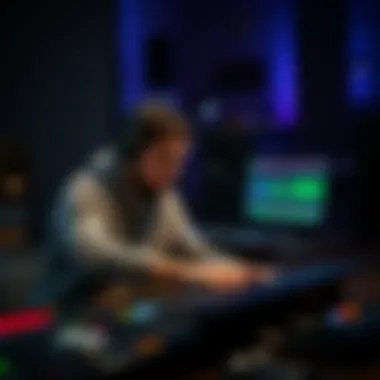
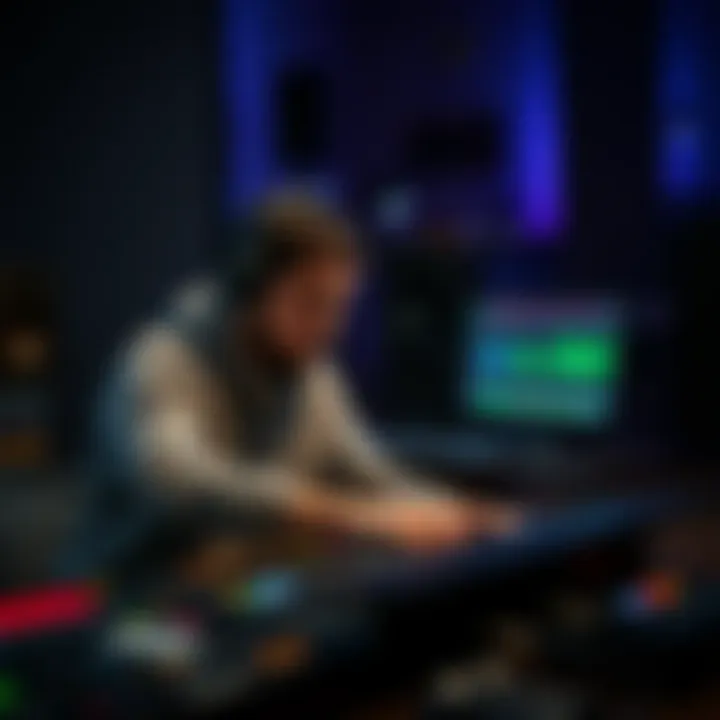
- Simple Navigation: Look for software that has a transparent layout. The more straightforward it is, the easier you can focus on your music rather than wrestling with the interface itself.
- Customization Options: Some software allows you to tailor the interface to your liking. Whether adjusting instrument placement or changing visual themes, customization can enhance your comfort and productivity.
Remember, the experience of using the software should feel like an extension of your creativity, not a barrier. A good UI keeps your mind focused on making music.
Supported Formats and Features
When diving into music creation, the formats and features supported by the software are crucial. Different genres and styles often rely on specific audio formats. It's vital to ensure your chosen software can handle these effectively.
- Audio Formats: Check whether the software supports standard audio formats like WAV, MP3, or MIDI. Compatibility with these formats ensures you can import and export your work seamlessly.
- Virtual Instruments and Effects: Many music making programs come loaded with virtual instruments and effects. Make sure there's a good variety available to cater to your musical style.
- Editing Capabilities: Look for robust editing features, such as cut, copy, paste, and effects automation. These tools can make or break your ability to produce high-quality music.
Ultimately, the functionality should align with your creative needs, offering flexibility to explore various musical directions.
Compatibility with Devices
Not all music making software operates flawlessly on every device, so assessing its compatibility is paramount. You want to ensure that your chosen tools work seamlessly with your setup, whether it’s a laptop, tablet, or even a smartphone.
- Operating Systems: Check if it’s compatible with your operating system. Most software will work on major platforms, but some have limitations on Windows or Mac systems.
- Device Specifications: It’s also essential to verify your device meets the software requirements. Insufficient RAM or CPU power can lead to lag and hinder your creative process.
- Mobile and Desktop Options: Today, many software options also offer mobile applications. If you plan to work on the go, compatibility with your smartphone or tablet can significantly enhance your productivity.
In short, your software should fit like a glove with your devices. It’s all about being able to create music wherever you are, without technical hitches getting in your way.
"Choosing the right music making software is akin to finding the right instrument; it shapes your sound and experience."
By applying these criteria, you can sift through the myriad of options and find the music making software that truly resonates with your needs, transforming the way you create and share your art.
Top Free Music Making Software Options
Choosing the right free music making software is crucial for anyone diving into music production, whether you're a budding artist or an experienced producer. The options available today offer various tools and features that can cater to different styles and skill levels. From simple interfaces for novices to complex functionalities for seasoned musicians, knowing what’s out there is the first step in harnessing your creative energy.
Free music software plays an essential role in democratizing music creation. It allows aspiring musicians access to professional-grade tools without the heavy price tag. This not only lowers the barriers for entry but also fosters innovation and experimentation since creators can explore their sound without worrying about financial investment.
Let's delve into five notable free music making software options, each bringing unique features and capabilities to the table.
Software A: Description and Features
Software A stands out for its user-friendly interface, making it ideal for beginners. It includes a robust library of virtual instruments, allowing users to experiment with various sounds and styles right out of the box. Key features include:
- Multi-track Recording: Easily record multiple instruments at once, great for layer-building.
- Built-in Effects: Includes reverb, delay, and EQ effects to enhance your sound.
- MIDI Support: Users can create melodies using MIDI instruments, expanding composition options.
The intuitive drag-and-drop mechanism simplifies the creative process, letting users focus more on their music than the technology itself.
Software B: Description and Features
On the other hand, Software B shines with its advanced sound synthesis capabilities. A favorite among electronic music producers, its standout features include:
- Modular Synthesis: Create a complex sound palette using modular components, offering flexibility.
- Sample Library Access: An extensive library of high-quality samples for diverse genres and styles.
- Collaboration Features: Share projects in real-time with collaborators and get feedback instantly.
This software attracts electronic music enthusiasts who want to push their boundaries and develop unique soundscapes.
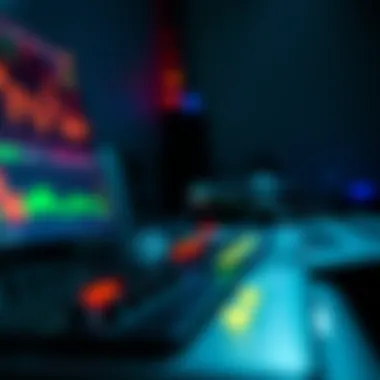
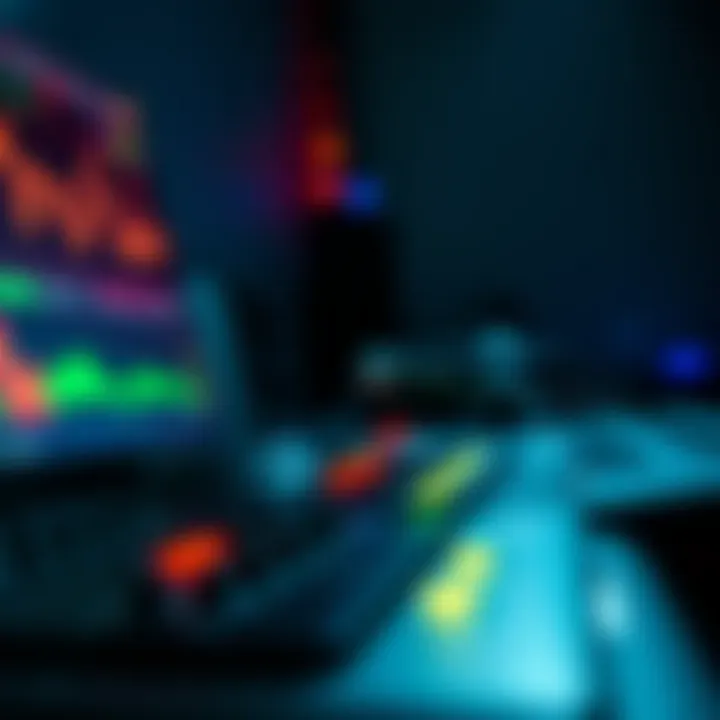
Software C: Description and Features
Software C is a great option for hip-hop and beatmakers. It prides itself on a straightforward layout that's perfect for quick beat creation. Some of its highlighted features are:
- Step Sequencer: Intuitive step sequencer that allows for easy beat making and pattern editing.
- Loop and Sample Integration: Import and manipulate loops effortlessly to tailor your tracks.
- Affordable Instrument Packs: Users can buy additional instrument packs for expanded creativity.
This software is ideal for artists focusing on beat-making, as it simplifies the process without sacrificing quality.
Software D: Description and Features
If you're after something more comprehensive, Software D is worth exploring. It’s a digital audio workstation that'll make any serious musician sit up and take notice. Here’s what it offers:
- Advanced Audio Editing: Powerful audio editing tools that allow for precise manipulation.
- Automation Features: Users can automate effects and parameters for seamless transitions.
- Community Learning Resources: An active user community provides plenty of tutorials and support.
This platform targets users seeking depth in their music production capabilities, making it a solid choice for those looking to grow.
Software E: Description and Features
Finally, Software E rounds out this list aimed at all-around artists. It comes packed with:
- Cross-platform Compatibility: Operate seamlessly across devices, perfect for mobility.
- Real-time Collaboration: Collaborate with others regardless of their location or chosen device.
- Comprehensive Support for Various Instruments: From acoustic to electronic, supports multiple types of music creation.
Thus, making it highly versatile for a wide array of users, especially those who appreciate switching between traditional and digital methods.
Selecting the right software can significantly shape your music-making journey. With these free options available, there's no excuse not to dive into the world of music production and explore your creativity.
Comparative Analysis of Software Options
A thorough comparative analysis of music making software options is often the linchpin in choosing the right tools for music production. This section pinpoints essential elements that will guide users through their selection process. For both novices and seasoned musicians, understanding the varying features, performance metrics, and user feedback can ignite informed decisions—ensuring each user finds software that aligns with their creative aspirations and technical needs.
Feature Comparison
When comparing music making software, examining features becomes the cornerstone of any decision. Different software comes with unique offerings that cater to various musical styles and workflows. Here’s a rundown of typical features to look out for:
- Audio Recording Capabilities: Some software allows for multi-track recording, while others might focus on loop-based creation. Assessing what you need is crucial.
- MIDI Support: MIDI functionality can elevate your production game. Certain programs offer extensive MIDI editing options, which might be key if you plan on using virtual instruments.
- Effects and Plugins: The availability of built-in effects and the ability to integrate third-party plugins can significantly enhance your music. Certain software shines with unique sound libraries, while others may lack depth.
- Collaboration Features: If you plan to work with other musicians, look for software with collaborative capabilities. Some solutions allow real-time editing and sharing, which can be a game-changer.
In summary, the depth and breadth of features in music making software can often dictate the nature of your music creation journey.
Performance Metrics
Performance metrics are equally important in analyzing free music making software options. There are key aspects to focus on that can impact efficiency and usability:
- System Resource Utilization: Programs that run efficiently without hogging CPU and RAM are often preferred. Consider testing software on multiple devices to see how they handle stress.
- Latency Levels: Especially critical for real-time recording and monitoring, low latency ensures that you hear the sound as it’s generated without annoying delays.
- Stability: Many users share frustrations regarding software crashes. Reading user experiences can give insights into a software's stability across different devices and use cases.
In a nutshell, understanding performance metrics helps you recognize the software that will deliver seamless music production experiences.
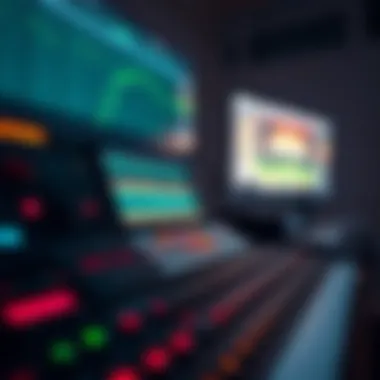
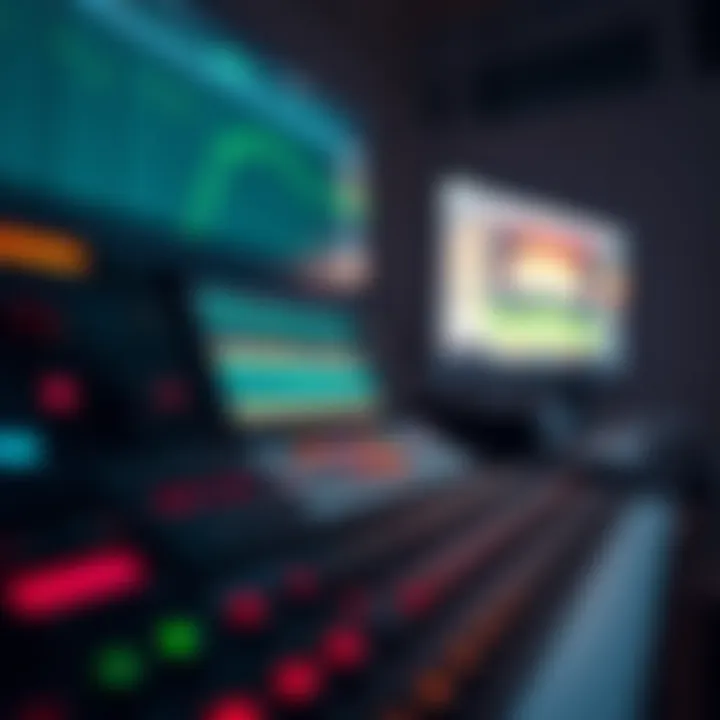
User Testimonials and Feedback
User testimonials and feedback serve as invaluable indicators of a software's efficacy. No marketing fluff can replicate the insights gained from real users:
"Finding software that feels intuitive is half the battle. I’ve tried quite a few, but some really lock me in a cage with their complicated interfaces." - A Thriving Music Producer on Reddit
Real-world experiences from fellow musicians can shine a light on pros and cons that might not be evident at first glance. Look for reviews that mention:
- Ease of Use: Users often highlight how steep (or gentle) the learning curve is. A software that is intuitive can make a world of difference.
- Community Support: Users appreciate platforms with active discussion forums. Having a community to turn to can make troubleshooting much less daunting.
- Regular Updates: Software that demonstrates commitment through regular updates is often a better long-term investment.
Taking the time to sift through user feedback can provide clarity and direct you towards options that are more aligned with your preferences.
Best Practices for Using Free Music Making Software
Navigating the world of free music making software can be a bit like sailing through rough seas. With so many choices and features, having a strategy is crucial. This section outlines best practices to ensure a smooth experience, maximizing the utility of these tools without running into unnecessary snags.
Initial Setup and Configuration
Setting up your music software is the first hurdle you must clear. Getting it right from the start can save you time later. Most free music production software comes with detailed installation guides, but here are a few tailored tips:
- Check System Requirements: Before you even think about downloading, look closely at the requirements. Many programs will need more than just a decent processor – think RAM, disk space, and operating system compatibility.
- Customize Your Workspace: After installation, take the time to arrange your workspace. Whether you prefer a minimalist vibe or a feature-rich experience, customizing your layout can boost efficiency. Forget about fiddling with settings mid-session; do it upfront!
- Install Plugins Carefully: Many music making software allows for additional plugins and sounds. Be selective with what you add. Too many, and you’ll clutter your workflow and risk crashing the software.
"Good setup is half the battle; the other half is creativity."
Creating Music: Tips and Techniques
Once you’re all set up, it’s time to dive into the creative process. Here are some effective techniques to keep your creative juices flowing:
- Start Small: Especially if you’re inexperienced, begin with short loops or simple beats. Trying to conquer a whole symphony in one sitting can be overwhelming.
- Experiment with Different Genres: Don’t box yourself in. Trying different styles can open doors to new sounds and ideas. Even if your primary interest is in one genre, dabbling in another might spark unexpected creativity.
- Utilize Built-in Tutorials: Many software programs offer comprehensive tutorials. Use these tools to familiarize yourself with features you may overlook otherwise. Free education is there for the taking – don’t skip it!
- Set Reasonable Goals: Perhaps you aim to complete a track in a week. That’s great! But keep it realistic. Break your work into smaller tasks to avoid burnout.
Collaborating with Other Musicians
Collaboration can elevate your music-making craft to new heights. Working with others can provide fresh perspectives or incorporate skills you may not possess yourself. Here’s how to work effectively with fellow musicians:
- Use Cloud Collaboration Tools: If you and your collaborators are miles apart, don’t fret. Cloud-based options like Soundtrap or BandLab allow multiple users to work on tracks together in real-time from anywhere.
- Share Your Screens: When discussing ideas, you can screen share your sessions. It’s much easier to communicate when both of you can see what’s being created. This way, feedback is instant and constructive.
- Set Deadlines: Creativity can be free-spirited, but having deadlines can help maintain focus. Agree on timelines to keep the momentum going.
- Respect Each Other's Contributions: Whether it’s lyrics, beats, or melodies, recognize the value everyone brings to the table. Acknowledgment not only fosters a good working relationship but also motivates further collaboration.
With the right mindset and a few tricks up your sleeve, you'll find that using free music software can be an enjoyable and productive experience.
Finale
In summarizing the exploration of the best free music making software, it is crucial to reflect on the significance of these tools in today’s music landscape. The advent of digital platforms has democratized music production, allowing countless individuals to express themselves creatively without the burden of hefty financial commitments. This accessibility fosters innovation and diversity in musical styles, as talents from various backgrounds get to play a part in the rich tapestry of modern music.
Summary of Insights
The insights gleaned from this article reveal that not all free music software is created equal. Each option presents unique features tailored to different user needs, ranging from casual music hobbyists to serious producers. The importance of user-friendly interfaces and comprehensive features cannot be overstated. As we saw, software like GarageBand offers simplicity and intuition for beginners, while alternatives such as Cakewalk or Audacity provide more in-depth options for those with greater technical prowess. In today’s fast-paced world, it’s clear that the right software can make all the difference in one’s musical journey.
Additionally, we discussed a few best practices to maximize the usage of these tools. Initial setup, sound creation techniques, and collaboration options all came into play, underscoring a holistic approach to music-making that goes beyond just software selection. Investing time to learn and adapt these tools can greatly enhance the quality of one’s musical output.
Future Outlook on Music Production Software
Looking ahead, the horizon for music production software appears bright. As technology continues to evolve, we can anticipate advancements such as increased integration of artificial intelligence and machine learning in music composition. Future software may offer innovative suggestions based on users’ previous work, or even help produce entirely original music based on minimal input.
Moreover, cloud-based services will likely dominate as they allow for easier collaboration among musicians across geographical boundaries. This shift could lead to unprecedented partnerships and musical fusions that weren't previously possible, enriching the industry as a whole.







